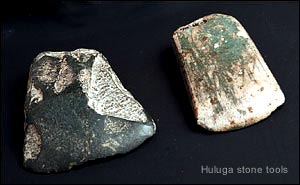The blog post “11 Things every Kagayanon should know about their past” was originally published on THE GEEK REPUBLIK: opening new worlds last August 6, 2017. WOWCDO.com was granted to repost the blog post. Photos and verbatim are owned by the respective owners.
While waiting for class, I managed to get a hold of an old book in the Library. It was a fascinating experience, a time machine of sorts. It was about the history of our city and here are some highlights:
1. We are “Neolithic-old”

Scientists from the National Museum uncovered remnants of an ancient settlement 8 kilometers upstream (near Huluga) during an excavation in 1970. A dating process revealed that those artifacts came from the late Neolithic period. This is 1,600 years old.
2. Cagayan de Oro is a second settlement
Himologan was the pre-colonial settlement located 8 km from our present city center headed then by a chief named Salangsang.
During the Christianization of Northern Mindanao, Recollect missionaries were able to influence the original inhabitants to convert with the help of Salangsang’s newly converted grandmother named Dona Magdalena Bacuya. They were then slowly transferred to the lower lands, which is now the present Gaston park area following the rudccion policy for easy evangelization.
3. The town centered around Cagian
The settlement in the lowland centered on a convent named Cagian which is believed to be located in the present day San Agustin Cathedral. Inhabitants (natives, new converts) numbering to 1,800 surround the convent.
4. We paid tribute to the Sultanate of Maguindanao
Himologan under Salangsan recognized the sovereignty of the Sultanate of Maguindanao headed by Sultan Bwisan, father of Sultan Kudarat. Salangsan started to pay tribute to the Sultanate in 1622.
However, due to Salangsang’s eventual conversion to Christianity, relations with the Sultanate went sour and the payment of tribute stopped. To gain back the tributes and drive away the missionaries, periodic raids were conducted by the soldiers of Sultan Kudarat. This was later pacified.
5. Our Gaston Park was a fort
Due to the periodic raids of the Sultanate, an Augustinian Recollect friar named Fray Agustin de San Pedro, a Portuguese ordered the construction of defensive structures to protect the town near the Convent. It is now our Gaston Park. He took charge of the Cagian from 1626-1637. The Fuerza Real de San Jose was then reinforced by stone but was later demolished in the 1800s.
6. Augustine fiesta by accident
Under father Pedro de Santa Barbara, they built the first Christian church near the fort. Coincidentally, it was finished on August 28, 1780 – the feast of St. Augustine. Since then, the inhabitants celebrate August 28 as the feast of the settlement.
7. Loyal to Spain and loyal to the Republic
Cagayan de Misamis, our old name, was considered a loyalist town. Some Kagayanons volunteered to fight with the Spanish crown against the revolutionaries. Some Kagayanons were even dispatched to fight in Luzon.
However, when the Spaniards evacuated Misamis, the town leaders convened and agreed to support the newfound republic. They were quick to recognize the government founded by Aguinaldo and sent him the list of the town’s governing board that he then approved.
They were spontaneous celebrations in plaza Divisoria.
8. 2nd Philippine flag in Mindanao
In light of the newfound freedom, the town’s leaders hoisted the Philippine flag in Casa Real, the present day City Hall. This is the second flag raising ceremony in the Island of Mindanao after Surigao. It was initially believed that it was in Cagayan de Misamis where the Island saw the Philippine flag for the first time. However, after an investigation, it was discovered that we hoisted the flag 14 days after that of Surigao.
9. The town folks voted to fight the Americans
January 16, 1900, the town leaders signed a pact of resistance against the Americans in Club Popular, a local tavern of the principalia class.
Atty Nicolas Capistrano was elected to lead the revolution with the rank of general. His staff was major Apolinar Velez and captain Vicente Roa.
When news came that Luzon and Visayas are falling to the Americans, they called another town’s assembly to get the pulse of the Kagayanons.They voted to fight the Americans.
10. We defeated Americans for the first time in the War
During the Philippine-American War, the brave Kagayanons defeated the Americans for the first time in the Battle of Makahambus Hill led by Col. Apolinar Velez.
11. A Cemetery in the middle of Divisoria
The basement of the Bonifacio Monument in Divisoria fronting Barkadahan is the final resting place of the brave fallen Kagayanons during the battle of Agusan.
For a closing, this 4-minute video best explains why History is important.
Sources:
The History of Cagayan de Oro by Marodnio M. Lao
http://cdoheritage.blogspot.com/2011/06/philippine-independence-day-in-cdo-past.html
http://philippineamericanwar.webs.com/thewarin19001901.htm
http://heritage.elizaga.net/history/